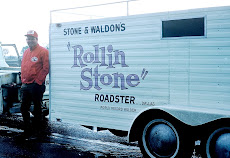As a young boy growing up in the 1940's I had plenty of heroes to look up to, but after reading a book on Charles Lindbergh's flight across the Atlantic Ocean, he went to the top of my list. I could easily have gone into aviation because of him, but poor eyesight and a heart murmur put an end to any flying career on my part.
Even in the 1960's I still carried an admiration for Lindbergh. In 1967 I visited the Smithsonian Museum in Washington, DC with the sole reason being a chance to see Lindbergh's plane, which has been on display there since 1928. I looked from one end of the museum to the other with no success. Finally I asked a security guard where the plane was and he simply pointed straight up. There it was,...suspended just about ten feet above my head.
C h a r l e s A. L i n d b e r g h
Man's first attempt to free himself from gravity's hold began just after the turn of the century in 1900. A couple of guys named Wright closed down their bicycle shop in Ohio to journey to a place in North Carolina where the wind always blew.. it was named Kitty Hawk. From that beginning man was always attempting to push the frontier of flying. By the time World War One broke out the airplane had become an instrument of conflict, able to not only bomb the enemy but to engagement him thousands of feet in the air in what became known as dog fights.
In the 1920's no plane had ever flown across the Atlantic Ocean. In 1926 New York hotel magnet Joseph Orteig offered a purse of $25,000 to anyone who could fly from New York to Paris, France. Many accepted the challenge, but by 1927 it was still just a dream.
French flying ace Rene Fonck attempted the feat but crashed on takeoff and barely survived with his life. Another French war hero, Captain Charles Nungesser, took off from Paris attempting to fly west to New York. Radio contact with Nungesser was lost over Iceland and he was never heard from again.
By the time Lindbergh was ready to make his attempt six aviators had lost their lives trying to achieve this feat and collect the 25 Gs. Lindbergh had put up one thousand dollars of his own money and borrowed another fifteen thousand from the State Bank of St Louis to build his plane. Ryan Flying Company of New York built the plane and wanted to put their own pilot in the plane until Lindbergh asserted his own plan.
He named the plane 'The Spirit of St Louis' to thank his financial backers for having faith in him. The Spirit carried a fuel tank of 450 gallons of very flammable aviation gas which weighed 2,710 pounds. Others attempting this flight had carried a navigator along with the pilot, but Lindbergh said he couldn't have the extra weight, so he flew solo. In the early hours of May 20, 1927 The Spirit fought off a muddy Roosevelt Field and just did clear the power lines at the end of the runway... He was on his way.
The flight took thirty-three and a half hours, and his only sound was the constant hum of the plane's J-5C radial engine. Lindy was having to adjust between three fuel tanks to keep them balanced and keep The Spirit on an even keel. To avoid storms and icing, he varied the altitude from ten thousand feet down to a mere ten feet above the black waters of the Atlantic. Using only a compass and dead reckoning, he made it. First across Ireland,..the English Channel,..and then the coastline of France.
Paris' LeBourget Airport was not even on the map Lindbergh was using, but he followed a steady stream of headlights to the air field where over 150,000 people turned out to welcome him to France. He landed at 10:22 on the night of May 21st. At that moment, the former air mail pilot had suddenly become world famous.
But the fame would also bring heartache. In 1932 the twenty month old son of Lindbergh would be kidnapped and held for ransom. A sum of ten thousand dollars was paid but six weeks later the body of Charles A. Lindbergh, Junior was found in a New Jersey ditch. Richard Hauptmann was found guilty of the crime and put to death. One month later the U.S. Congress passed the Lindbergh Law which makes kidnapping a federal crime.
Lindbergh would lose a lot of his esteem during the early years of World War II for his comments glorifying the German military and frequent visits to Berlin. In speeches he said Britain and France were outclassed by the Germans. He was also a prominent anti-war speaker here in America, but after the Japanese bombed Pearl Harbor he volunteered to President Roosevelt to help any way he could. He flew over fifty missions in the Pacific as a civilian consultant to the American war effort.
Lindbergh spent his latter years in the Hawaiian Islands. He died there August 26, 1974 and is buried near his home on Maui. The cause of death was lymphoma. His headstone has only his name and the dates of his birth and death.













